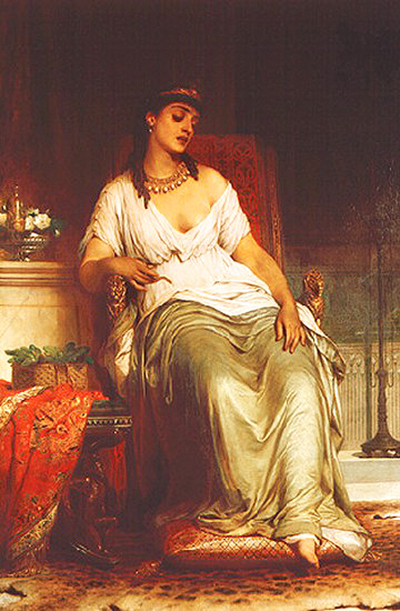Painted in 1876, Cleopatra by Frank Dicksee is oil on canvas painting. The painting has an image of an attractive, mid-age woman sited on what appears to be a throne chair.
She seems to have an extravagant lifestyle, as evidenced by her expensive clothing, jewellery and the leopard skin carpet on the floor. The woman in the picture is Cleopatra, as depicted by the title of the painting. Cleopatra was an Egyptian ruler who was famed for her beauty and intellect and the fact that she had love affairs with both Julius Caesar and Mark Antony.
In this painting, like most of Frank Dicksee's paintings, the style used is romanticism. This art style started in the late eighteenth century and ended in the nineteenth century. Unlike the previous artistic forms like classism, the main focus in romanticism was the individual, respect for nature and celebration of the common man. The romanticism movement was a rebellion against Neoclassicism, and it is believed to have been born by the huge societal changes that occurred in the period. Such changes in societies include the revolutions that spread through the United States and France as people demanded democracy.
The artwork is currently a private collection, meaning it is privately owned by an individual and not on display in a museum or art gallery. There is no much information about the current owner of the painting, as there is no clear history of its transfer from the original painter. Frank Dicksee's father introduced him into painting at a tender age. His father, Thomas Dicksee, was also a painter and his paint works may have inspired Dicksee and his sister to choose art as a career.
Dicksee later joined the Royal Academy in 1870 where he learned under the guidance of some of the best painters like Sir John Everett Millais and Frederick Lord Leighton. Dicksee was also inspired by the literary works of Shakespeare, as evidenced by his artistic interpretation of the balcony scene from Romeo and Juliet. His art career was successful as he made paintings for influential people and also became the president of the Royal Academy in 1924.




